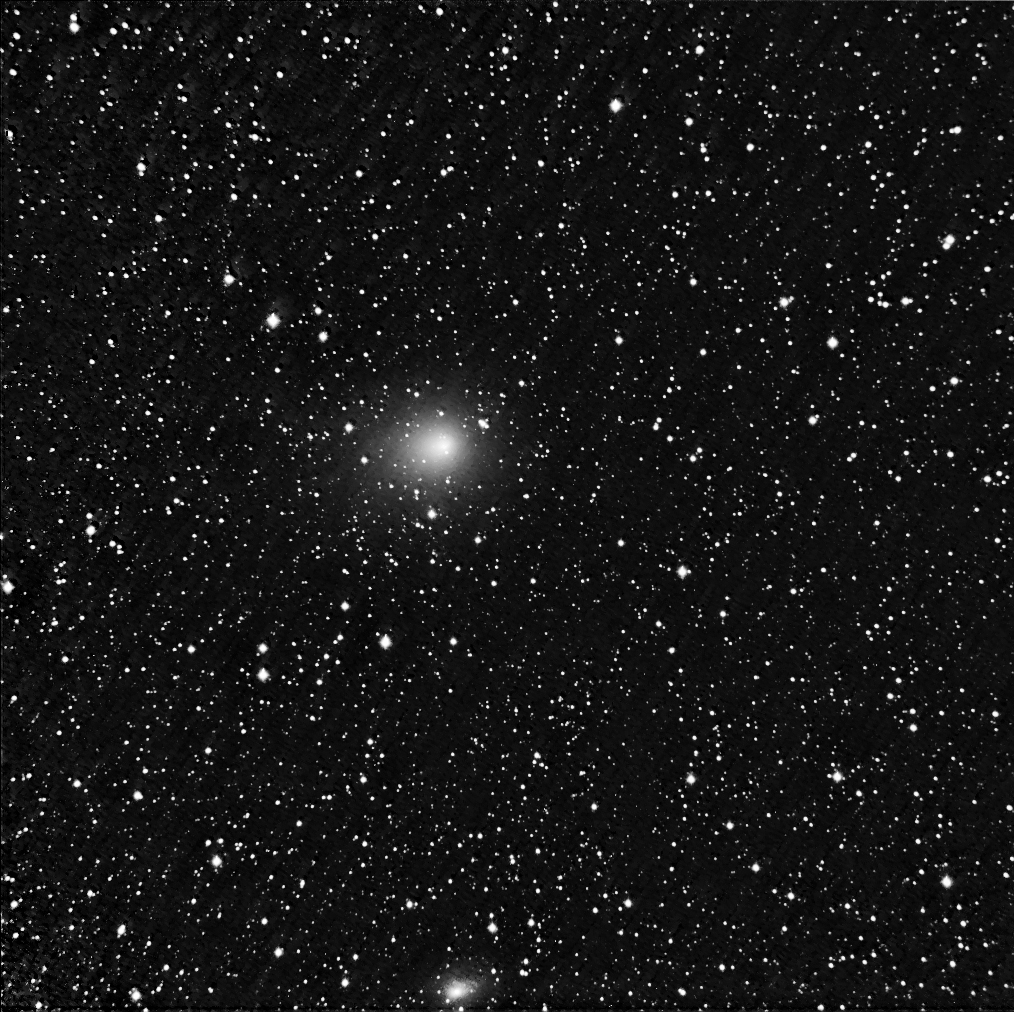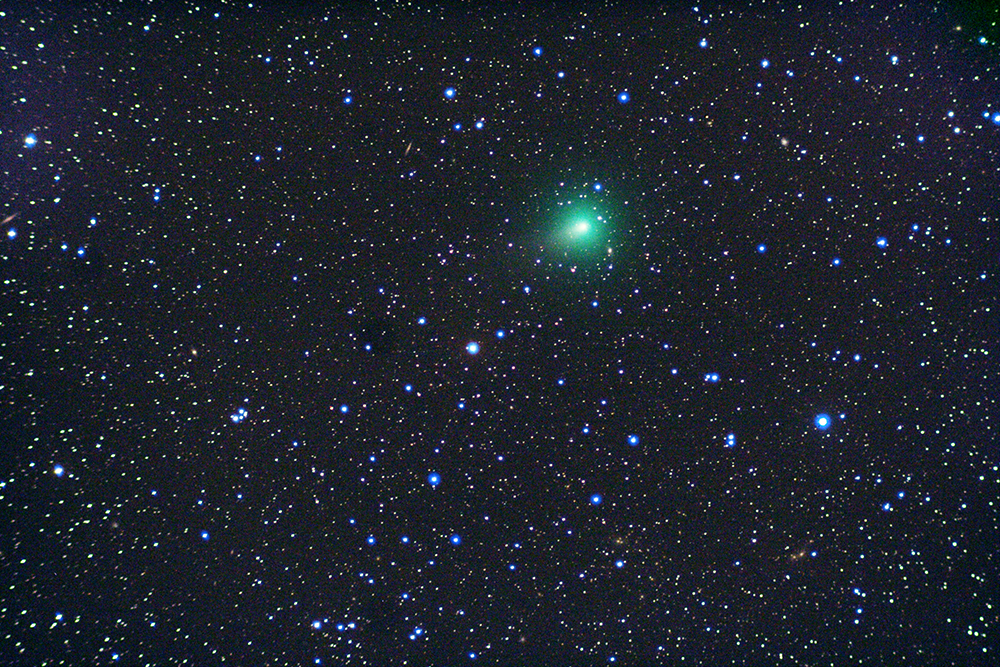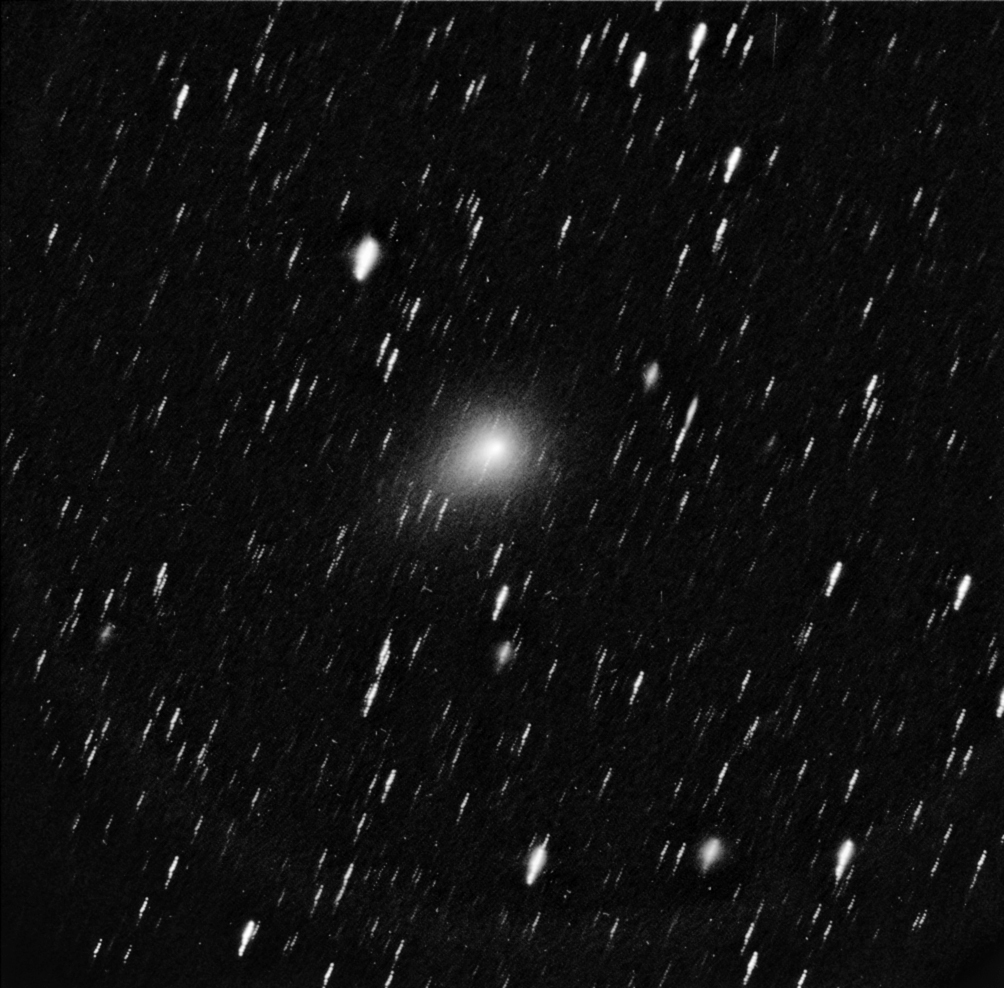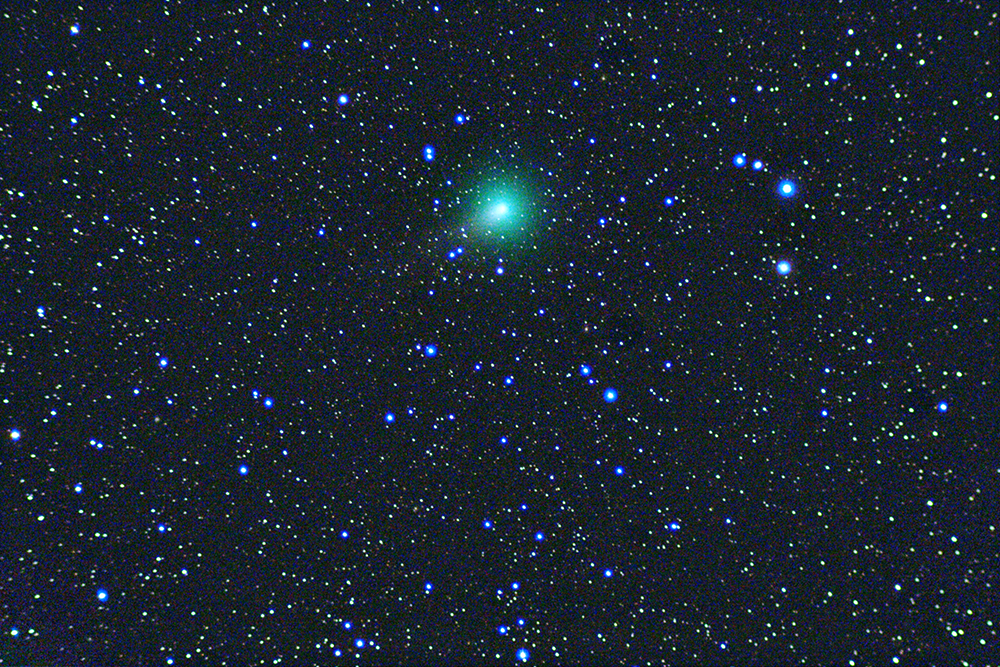
Comet 2008 Q3 Gerradd. June 7, 2009.
Combination of 5, 3 minute images, SBIG STL-1001E CCD.
300mm f/6 newtonian telescope at prime focus.
The brightest comet visible from the southern hemisphere during June was Comet 2008 Q3 Gerradd, discovered by Gordon Gerradd from New South Wales, Australia. It reached perihelion on June 23 at a distance from the Sun of 1.8 AU. At the time it was very favourably placed high in the sky late in the evening. Although predicted to be only around magnitude 12.5 at this time, it was moch brighter than this, proving to be a very easy object in 80mm binoculars. My first observation of the comet was on June 7 when it was around magnitude 8.3 with a well condensed coma some 5 arc minutes in diameter. The coma was strongly asymmetric in PA 106. This was probably the result of a tail that which would have been pointing almost directly away from the Earth at the time.

The above image has been processed by combining a single image to "freeze" the starfield along with median and summed images to show the comet. By processing images this way, it is sometimes possible to remove the effects of the comet's motion. The bright galaxy near the bottom of the image is the 12.1 magnitude, NGC 5266.

When imaged in colour with the DSLR, the very strong green colour of the coma is very evident. The edge-on spiral galaxy at the left edge of the image is the 14.0 magnitude, PGC 45098.

My final observation of the comet was on my final night at the observatory, June 23. The comet had changed little over the course of the month, getting slightly larger and brighter.
